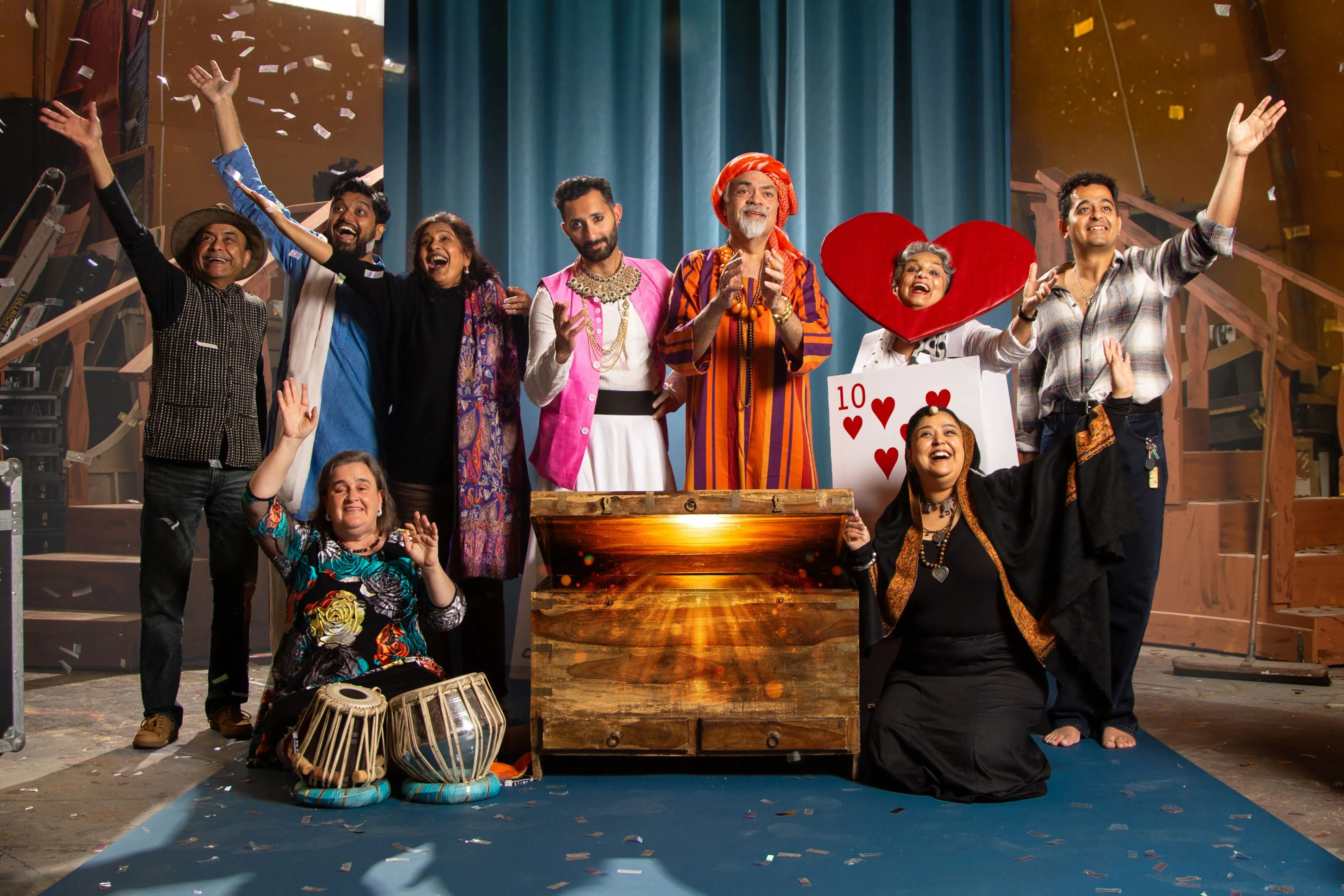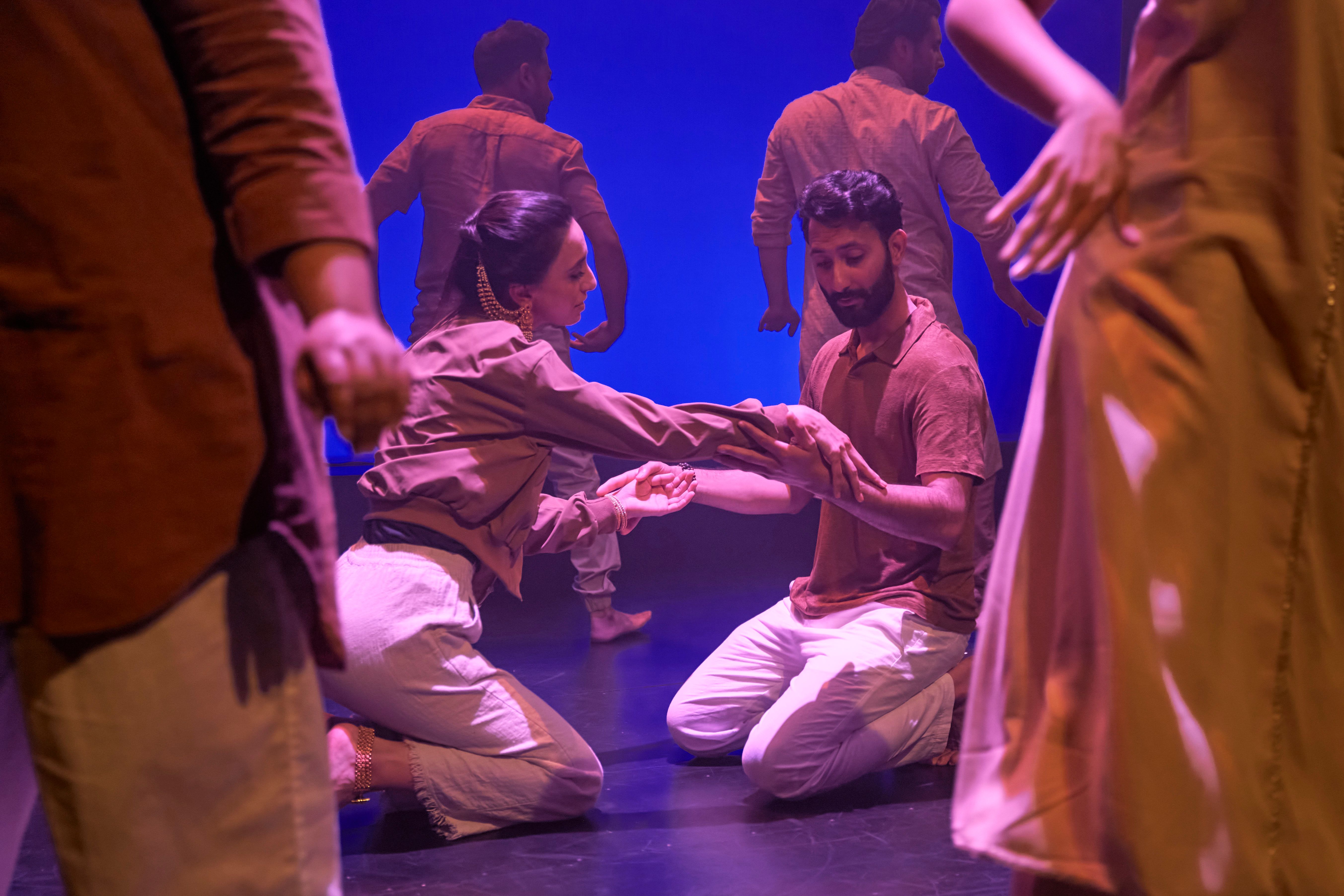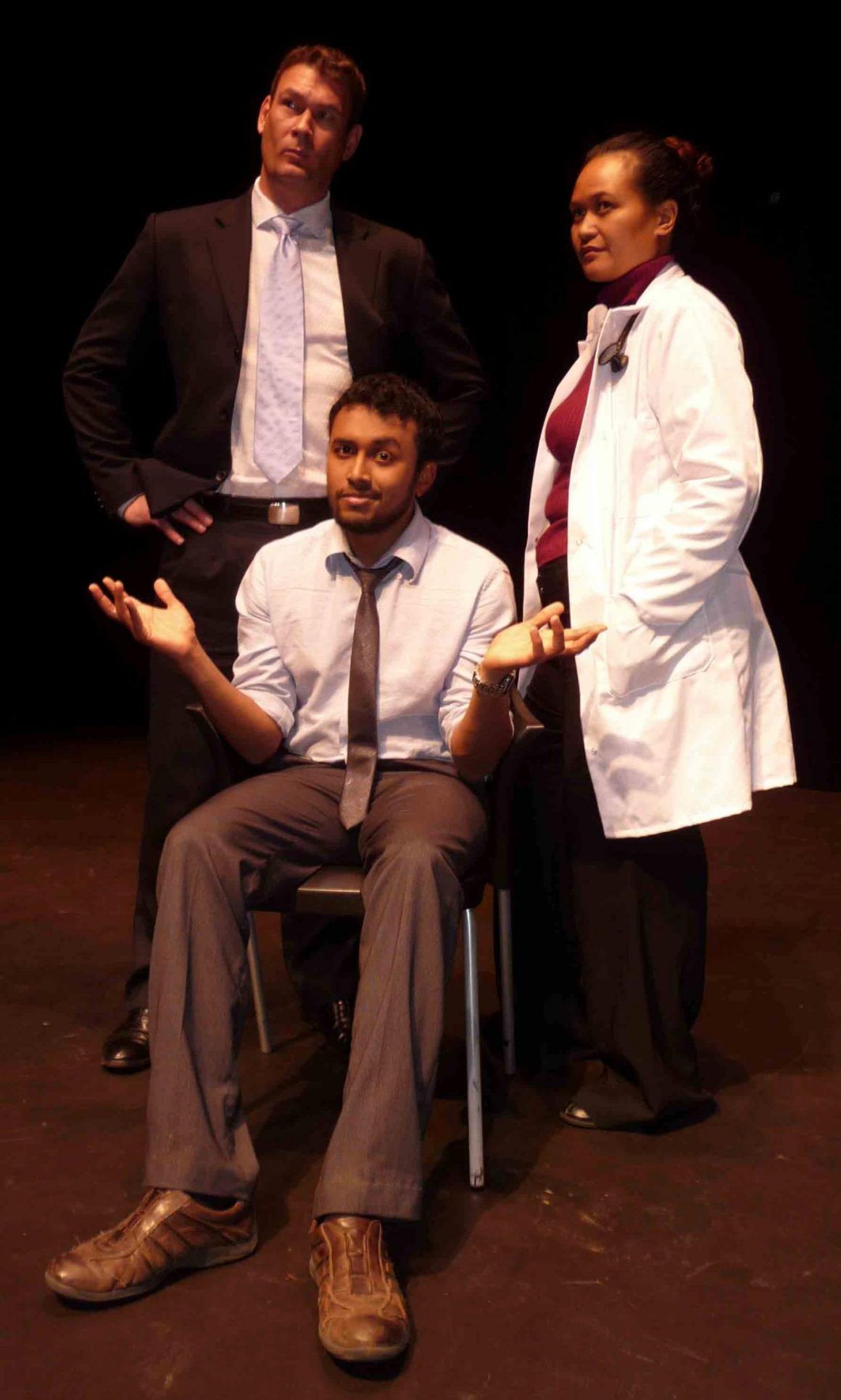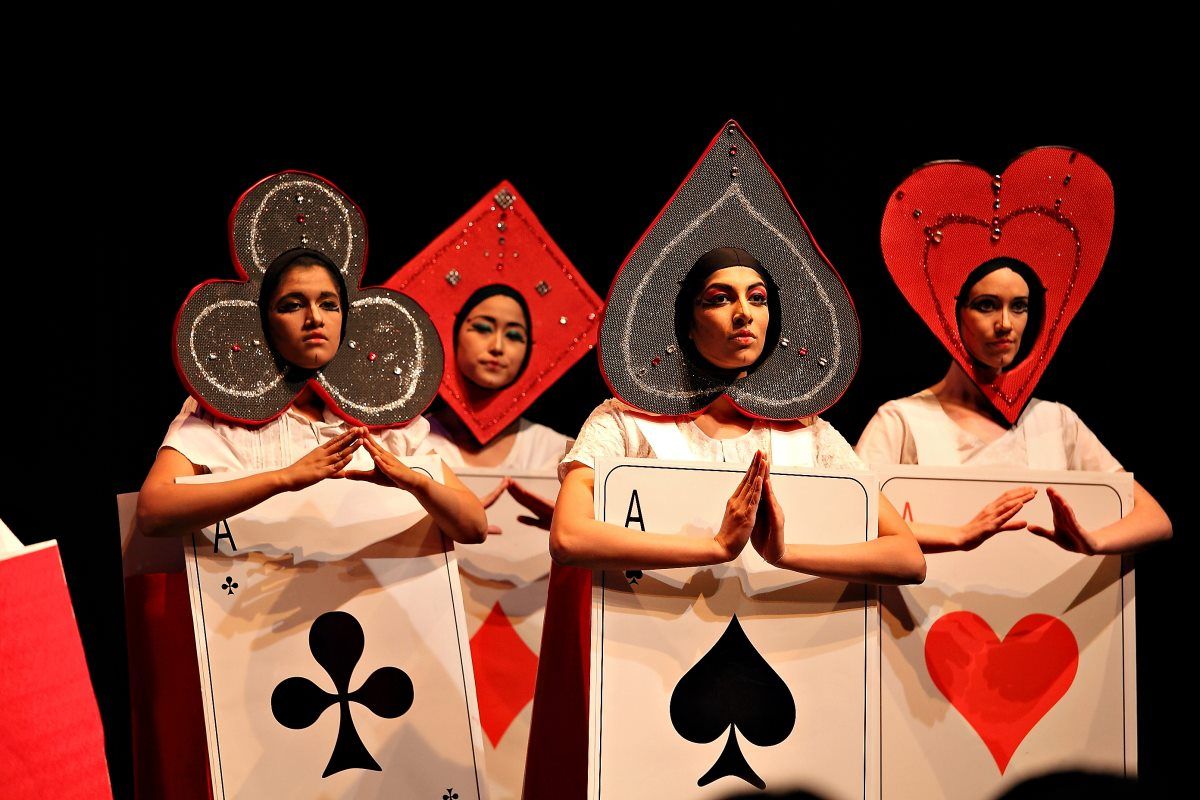Community and excellence: Prayas Theatre hits 20 years
This month, Prayas Theatre celebrates its 20th year lighting up stages with South Asian storytelling. Sam Brooks talks to co-founders Amit Ohdedar and Sudeepta Vyas about the company’s journey.

The vibe around Prayas Theatre shows is undeniable. The audience is buzzing, the manaaki is on-point, and without fail, it’s a window into a world that many New Zealanders wouldn’t get an insight into otherwise. (Also, more often than not in the past decade, the shows have been sold out, or not far off. There’s no vibe better than a full audience.)
This month the company is celebrating 20 years of bringing work to Tāmaki Makaurau to not just represent and reflect the South Asian community, but to entertain people from any background in New Zealand. Their new show, Pitārā, ties together threads from that two decades of history. It presents a series of scenes from six shows from their considerable body of work (over 30 shows and counting). Those works include their maiden production Charandas Chor – The Honest Thief by Habib Tanvir from way back in 2005, Love N’ Stuff by Tanika Gupta from 2016, and Swabhoomi devised by the Prayas ensemble themselves in 2017.
It’s impossible to cover the company’s breadth of work – Pitārā collects snapshots of some of their most popular shows, and exemplifies the massive range of work Prayas has presented – from internationally renowned names and local playwrights right through to five minute slices of life from company members. Although they are a community-led and driven theatre, their works aim for – and often achieve – excellence, and they have collaborated with professional companies like Auckland Theatre Company and Agaram Productions.
So how does a company go from community roots to becoming a pou of the Tāmaki theatre scene?

You have to go back to 2005 to figure that out. When Prayas was founded, the main communities that were coming into the company came from India, Sri Lanka and Bangladesh. “There was a lot of the Indian diaspora here, and we found that the performing arts culture was absent for us,” says co-founder Sudeepta Vyas.
“The South Asian subcontinent was known through the prism of Bollywood, some spirituality and a good curry,” jokes co-founder Amit Ohdedar. “We tried to break that perception by bringing in India as a culture or a subcontinent as a very wide variety of forms of theatre. That’s what we’ve tried to do over the years.”
Prayas – meaning “attempt” – was an attempt to integrate into Aotearoa. “We decided that if we wanted something, we can’t just say that it doesn’t exist and complain about it. If you want something, you build it,” says Vyas. “Rather than expecting the country to give us something that we enjoy, we thought, ‘Why don’t we build something that New Zealand can enjoy with us?’”
Thus, Prayas came into being.
Initially, they struggled to create awareness. The media landscape was different back then, for better or worse. While print media was comparatively thriving, it was also comparatively Pākehā. Promoting shows on social media was but a glimmer in a tech giant’s eyes. However, word-of-mouth was, as it is now, the most reliable way to get the proverbial bums on seats. “We had to tap on the shoulder of our community,” Vyas says. “That’s how we created the energy. We talked to the heads of communities, asked them to ask their people to come and see us, and within our communities we created that demand.”

Their goal, however, was to go beyond their communities. They eventually got there through word-of-mouth, largely from younger people within the company. In 2009, they programmed Khoj – The Search by Rohinton Mistry, directed by Ohdedar. Mistry had name recognition due to writing A Fine Balance, and would give them the extra push to get aside the line. The show raised questions through humour, notably the protagonist adjusting to life in New Zealand (adapted from Canada in the original short story), by figuring out how to use the different toilet here.
Both Vyas and Ohdedar point to this as the turning point for the Prayas. “Rohinton Mistry made it happen for us,” Vyas jokes. She remembers walking out of the theatre to see a massive queue running outside TAPAC, a venue which has played host to many of the company’s shows in the years since. “People were queued up at the box office wanting to see the show, they’d heard so much about it,” she says. “Even TAPAC was gobsmacked. I didn’t feel vindicated, but I felt like there was now hope that we could carry the company forward now, safely.”
That show marks one turning point for the company. Other turning points were more subtle, bigger budgets here, bigger casts there, as they slowly carved out their own corner of the performing arts space, while never losing their roots in the community. Throughout the 2010s, they continued to perform regularly at TAPAC, the Herald Theatre, and at Basement Theatre. While playing in the same venues as professional theatre companies, Prayas remains committed to serving a community.
As the shows got bigger, Prayas has retained its roots as a community theatre. “That’s our kaupapa, that’s our spirit, that’s how we operate,” says Ohdedar. “We want to accommodate as many aspiring artists who come to our auditions as possible.” Prayas are noted for their large ensembles, with especially a large youth demographic taking part. “We’ve often found ourselves as a kind of platform, a social platform. They come to us to practice theatre, but they form friendships and associations outside the theatre.”

They have also strived to be at the level of professional theatre companies. When you look at the industry now compared to 2005, it is a much more diverse place (albeit with still quite a way to go). The industry, particularly the graduates coming out of drama schools and polytechnics, were extremely Pākehā, and the perceived “quality” between those graduates and the communities that Prayas Theatre served, and worked with, led to a bias against the company’s shows. That, alongside the deeply entrenched divide between professional and amateur theatre, puts Prayas Theatre in a no man’s land. In the 20 years since, other theatre companies have come in the trench between professional and amateur alongside Prayas, but the company is truly a trailblazer.
Ohdedar believes that the high quality of Prayas Theatre’s shows comes from them being a minority organisation. “There is always this aspiration of excellence – committing to excellence in whatever we produce and share with the wider community,” he says. “That pride gives us that drive to excel and where we bring in collaboration with other professional artists.” He points to Margaret-Mary Hollins and Ahilan Karunaharan as artists who have been part of their journey.
For Karunaharan, a now award-winning theatre-maker of Sri Lankan descent, Prayas has meant everything. When he moved to Tāmaki in 2010, most theatre doors were closed to the South Asian community. “They were exclusive, in-house, and siloed,” he says. “Prayas became my training ground: I trial-tested ideas, pushed forms, trained actors and devised new work. It gave me a body of work, opportunities to stage my works, and expand my artistic craft.”

His first experience with Prayas was as a performer. He played the king in Tasher Desh – The Kingdom of Cards in 2011, a satire of social structures loosely inspired by Alice in Wonderland. “What was special about that first encounter, was being in a room full of POC creatives, speaking multiple languages.”
In 2015, he collaborated with Prayas through his own theatre company, Agaram, on his play The Mourning After. It was his first play at Basement Theatre, and he felt like the industry was especially cruel towards the work. “It was pretty much a public proclamation that, as South Asians, we weren’t seen as equals in that space, and that we should focus on telling exotic or cultural stories rather than being political or contemporary.”
“It hurt, but it catalysed my resolve: I decided to engage the system and change it myself.” Karunaharan became the programming assistant at Basement Theatre, and convinced then-programmer Gabrielle Vincent to program Prayas. The result was First World Problems, a work comprising 23 bite-sized new plays. “It was our reclamation. A middle finger to the naysayers who said we weren’t professional.”
Vyas recalls a moment during this production. One of the pieces was from a man who helped his father migrate to New Zealand, and how he didn’t have the patience to deal with his father’s inability or unwillingness to adjust. “We were all standing behind him in the chorus,” she recalls. “A lot of us were crying away, but in the audience there were these grown men who were sobbing. These migrants who have left so much behind. It was all written on people’s faces.”
Only a few years after that would come another turning point: Prayas Theatre collaborating with Auckland Theatre Company on a full scale, professional, production of Rohinton Mistry’s Booker Prize winning A Fine Balance in 2019. “That was a proud moment for a community theatre like us, to be able to have that opportunity and be accepted by the general audience in such a way,” says Ohdedar.
Karunaharan directed the production, and frankly, it’s one of the best shows ATC have done in a decade. Part of that is due to the strong bones of the story, part of that is due to the resources that ATC can provide, and part of it is due to the energy, vigour and rigour that Prayas had formed over 14 years.

Ohdedar never expected the company to last 20 years, but he’s watched it grow organically, as more people come in and bring their energy into it. “In the next few years, there should be a new generation. We’ve been doing it for many years now, and there’s a new group of people who are actively engaged and taking active initiative to run the company.”
“All in all, I would expect that the spirit of community theatre is not lost, and that, within that, we keep that spirit alive. We should be doing more and more.”
Vyas also hopes that the community will be bold enough to talk back to what’s going on in the world. “I hope the younger generation come out and use theatre, use Prayas, as a platform to talk about and unite more communities”.
It’s a feat to make it twenty years in the arts sector. Judging from the past twenty years that Prayas has had, another twenty doesn’t feel out of the question. Hell, it feels certain.
Pitārā plays at TAPAC from November 5-7.